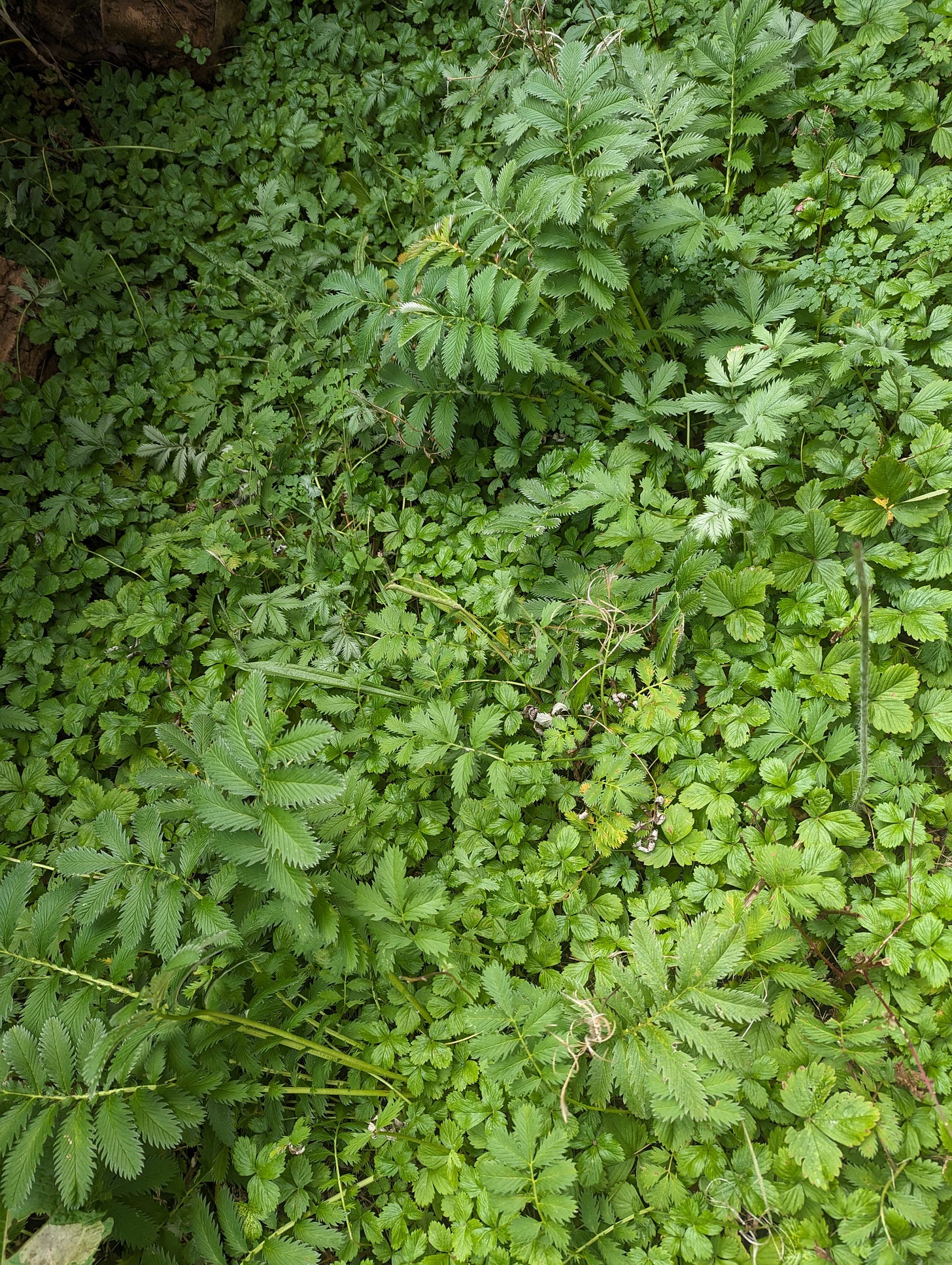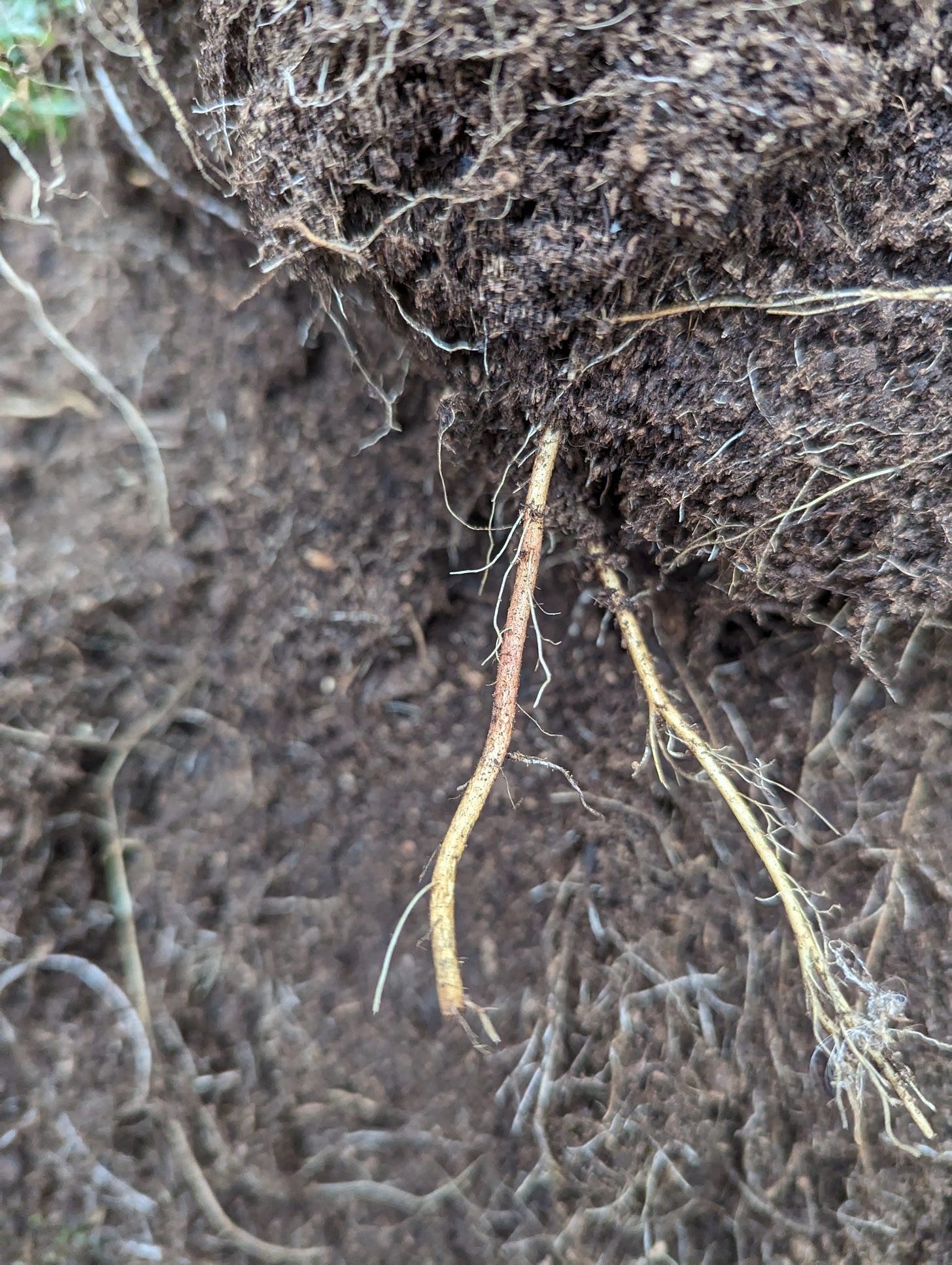Silverweed Breeding Progress Report #6
Waiting for the flower
For convenience, here is an index of my Silverweed related content.
Just a quick update about my Silverweed Domestication Project
If you’ve been keeping track, I sourced several promising species from the Potentilla genus earlier in the year in the hopes that I could create some intergeneric hybrids to take advantage of hybrid vigour and to increase the depth of the gene pool.
I was delighted to find that all these species flowered, but disappointed at the performance of the Common Silverweed blooms. When I say disappointed, I really do mean that. I perhaps counted three flowers all year. My running theory for this is two fold. I planted mature specimens in shadier areas and self sowed seedlings in sunnier areas. Coupled with the terrible summer (the rainiest July on record in my area) and that Argentina anserina generally flowers in its second year, it’s a recipe for low blooms.
I also made the mistake of inter-planting my mature Silverweed specimens with some wild strawberries. Turns out that wild strawberries are even more rampant than A. anserina in my climate.
To hedge my bets, I transplanted most the Potentilla species I’d been growing in pots into various microclimates around my garden. These include an east facing, windy, front flower bed, a shady west facing micropond at the very back of the garden, and wedged in the dark between a badly weeded asparagus bed and the apple tree. I figured I would go all out and just plant Silverweed and Cinquefoil (the common names for Argentina sp. and Potentilla sp.) everywhere. I’ve noticed first year Silverweed seedlings pop up all over the garden anyway, including the lawn, so I just decided to follow Nature’s cue.
Next year, I’m crossing my fingers for more blooms as the first year seedlings enter their second year and from there I can start sending out seeds to willing candidates.
As I was un-potting the Nepal Cinquefoils for transplanting, I mussed up their rootballs to investigate claims that they had starchy roots. I discovered that they have some slightly enlarged roots amongst finer ones and I would guess that they have some carbohydrate storage capacity. After all, P. nepalensis is fairly well known for being low maintenance which implies some type of long term survival strategy.
In other related news, I was gifted Argentina egedei and Argentina anserina from an internet acquaintance located all the way in Iceland. A. egedei is most recently known as the synonym of Argentina anserina subsp. groenlandica, i.e., a Greenland adapted cultivar of Common Silverweed. I was eager to obtain these samples, but none have really thrived. Two of the three A. egedei seems to have withered, but the other A. anserina have at least clung on. I will try and move these to a different microclimate. Right now, they’re on the shady North facing side of my house which I normally use as a nursing area for weaker transplanted specimens. For comparison, the Nepal Cinquefoil have thrived and flowered in this same microclimate. My theory for the poor performance of these Icelandic specimens is the rainfall in this area. Let’s see if they pull through the winter. My acquaintance tells me that they’ve observed some intergeneric hybridisation between various Potentilla. To quote them:
The aroma came from hybrids of P. atrosanguinea P. megalantha, P nepalensis, P. recta and more. Varied forms so the ancestry very uncertain. [Self sown] plants from [a] place where many Potentilla were planted.
It gives my Silverweed domestication project hope that a straight forward dense cluster of many species can yield novel forms.
Until next time.






These stumbling steps are all part of the process. It sometimes takes me a few years to get flowering to line up, and terrible season where nothing goes right are all normal enough. As long as things keep growing then you will get there eventually.